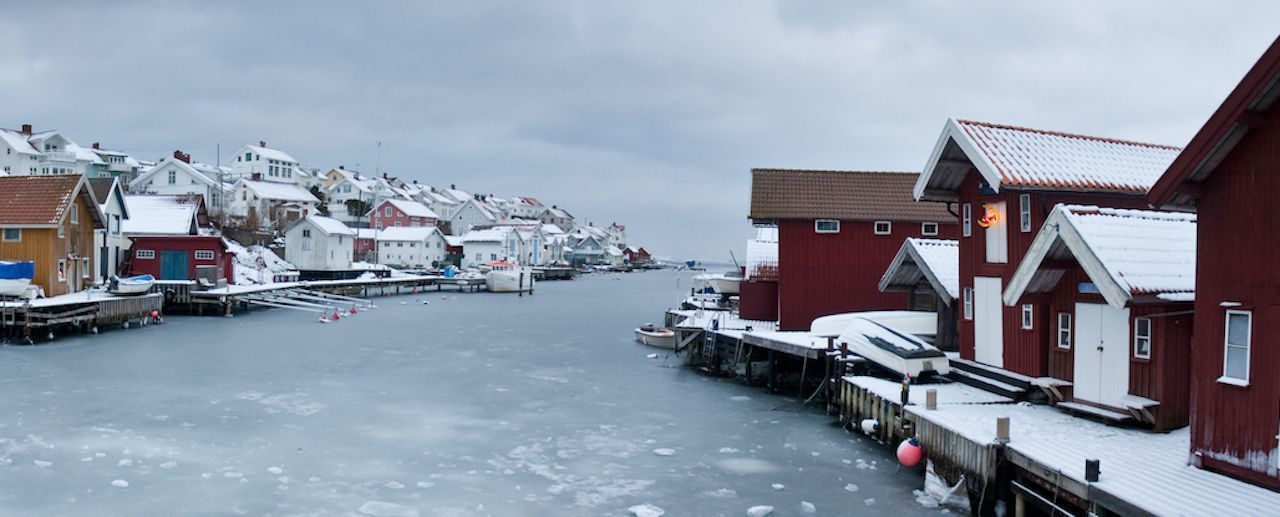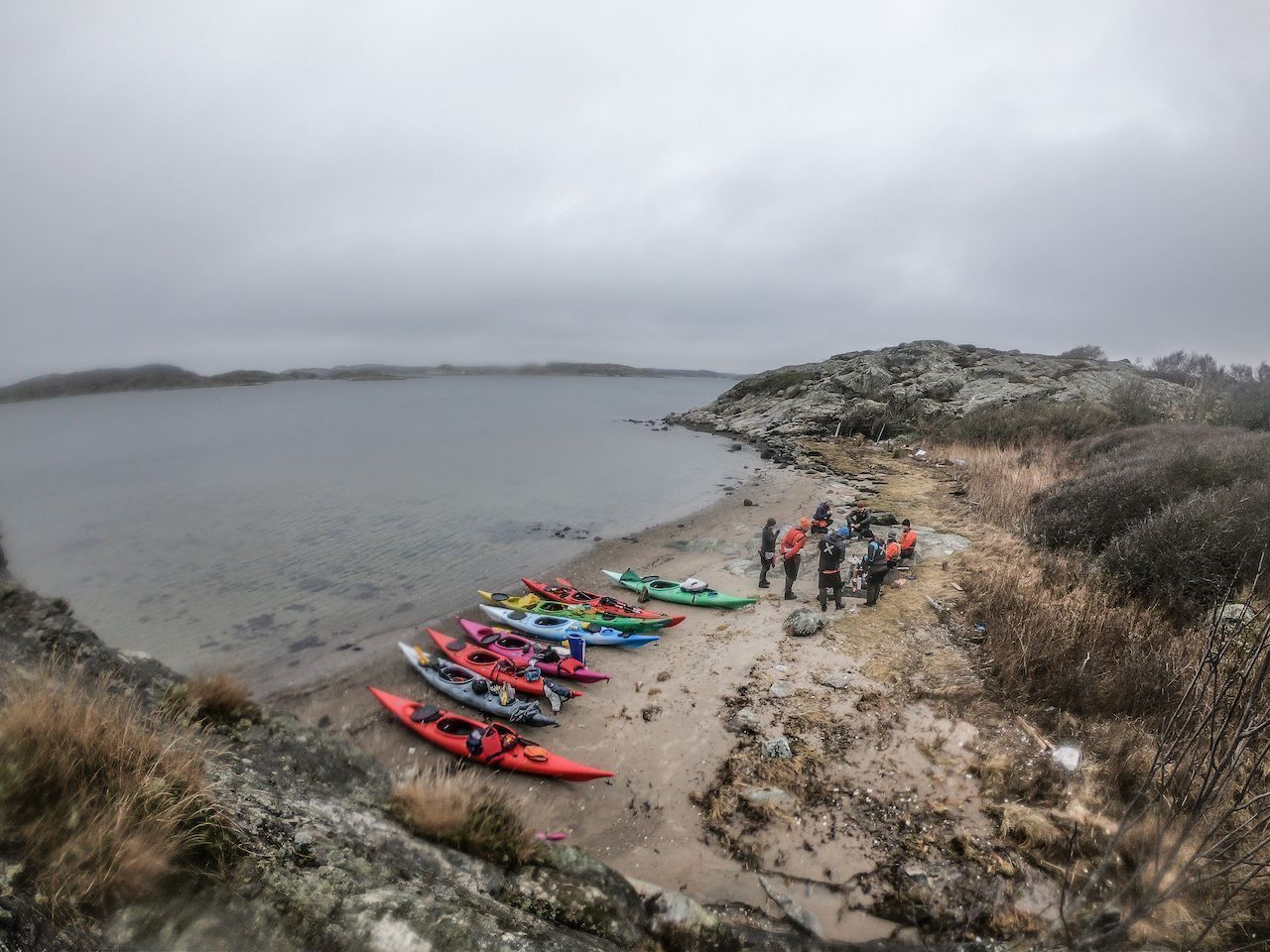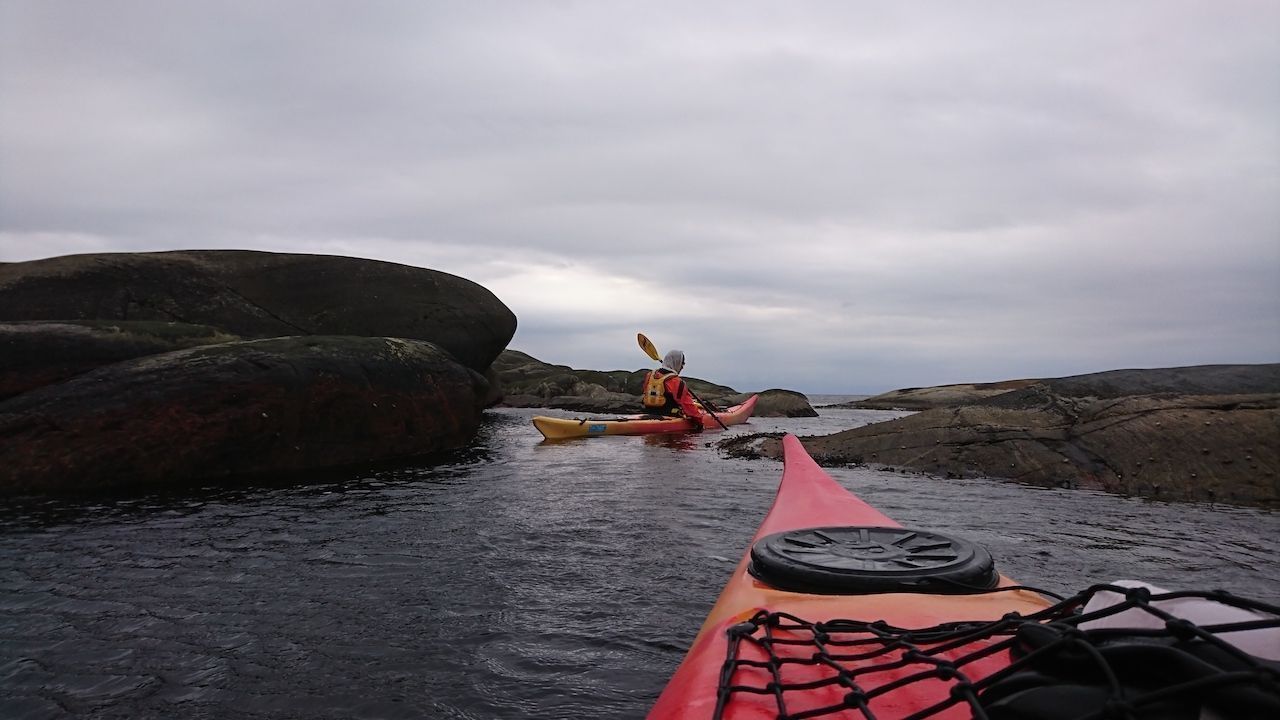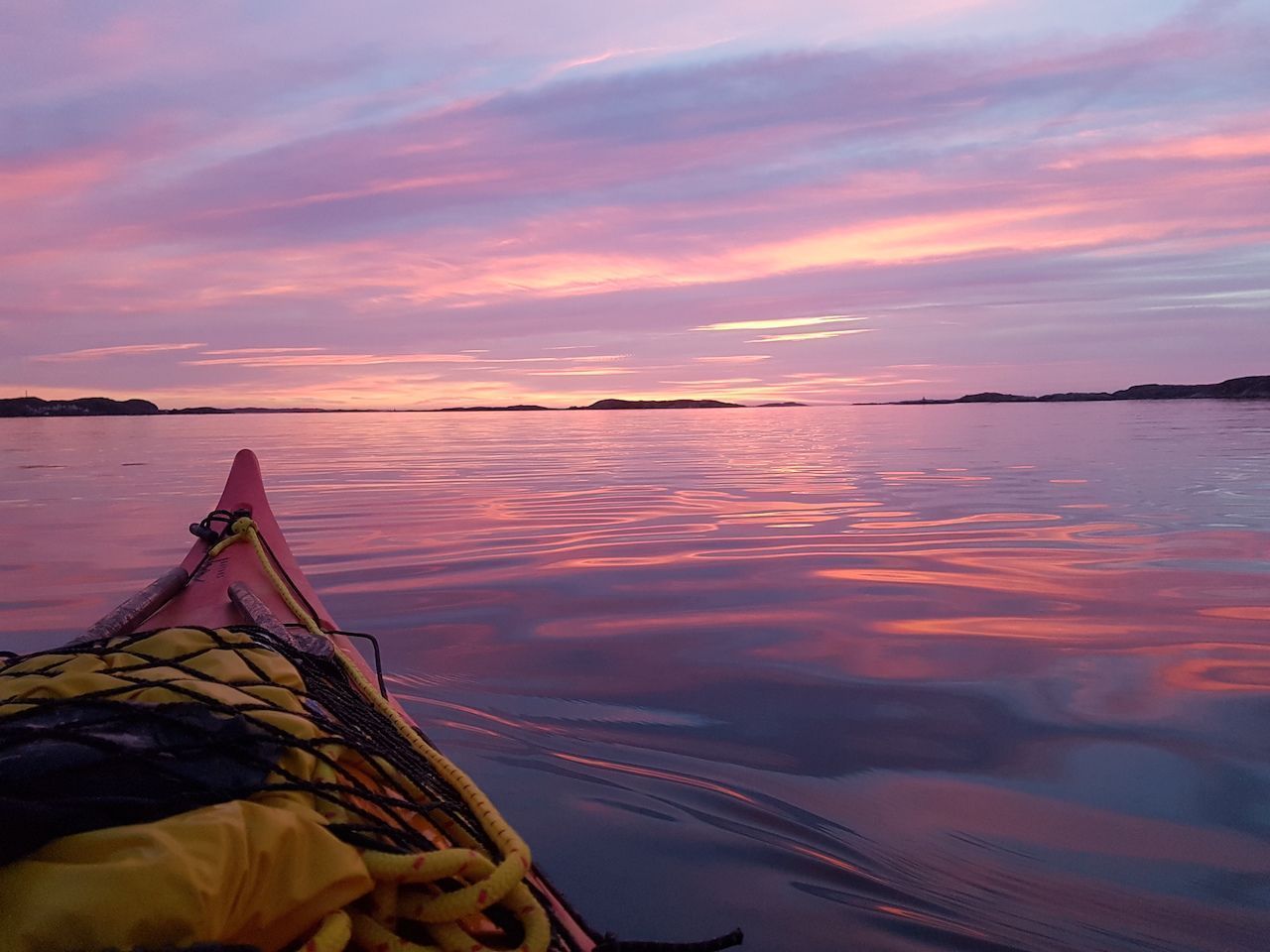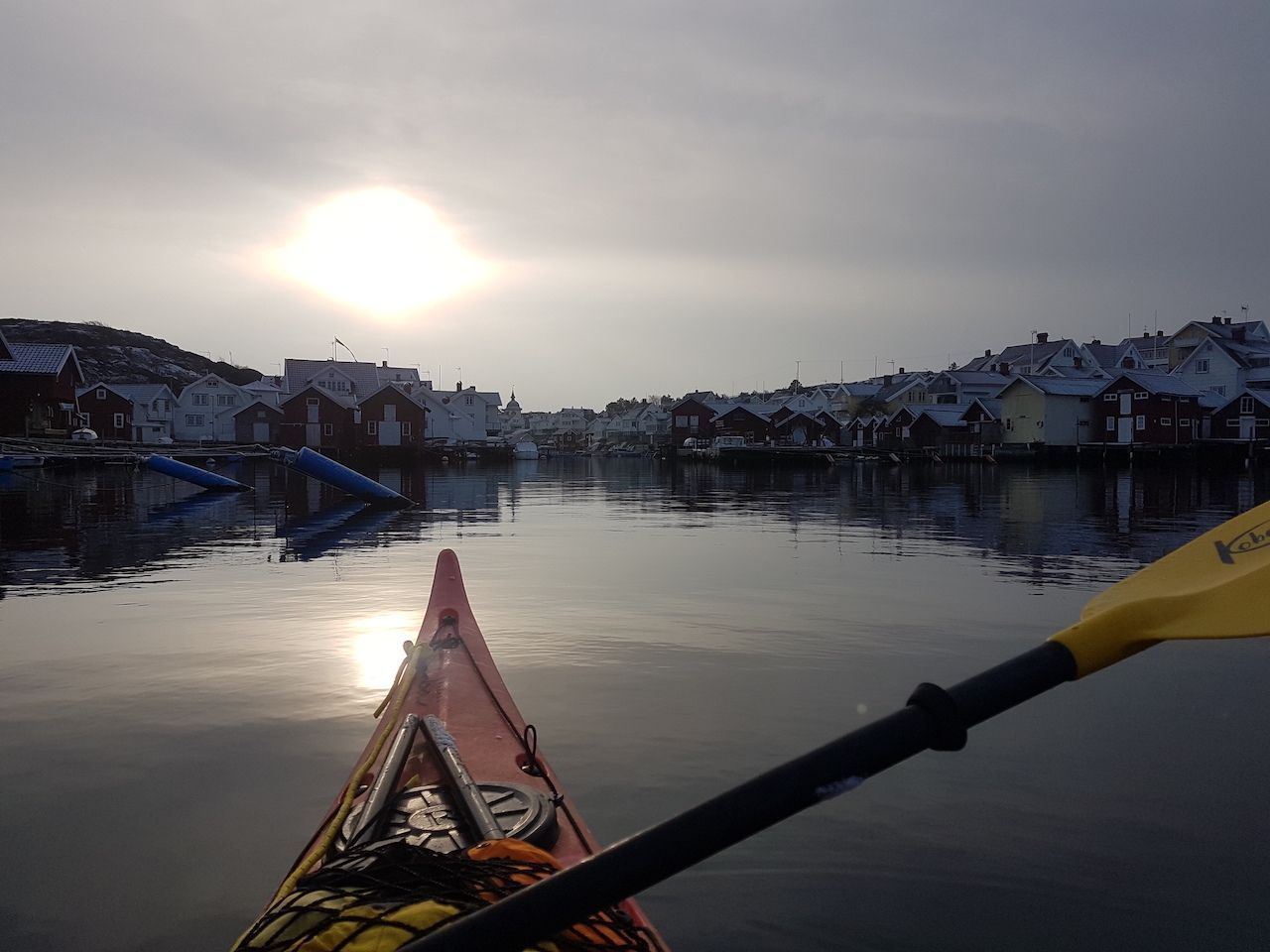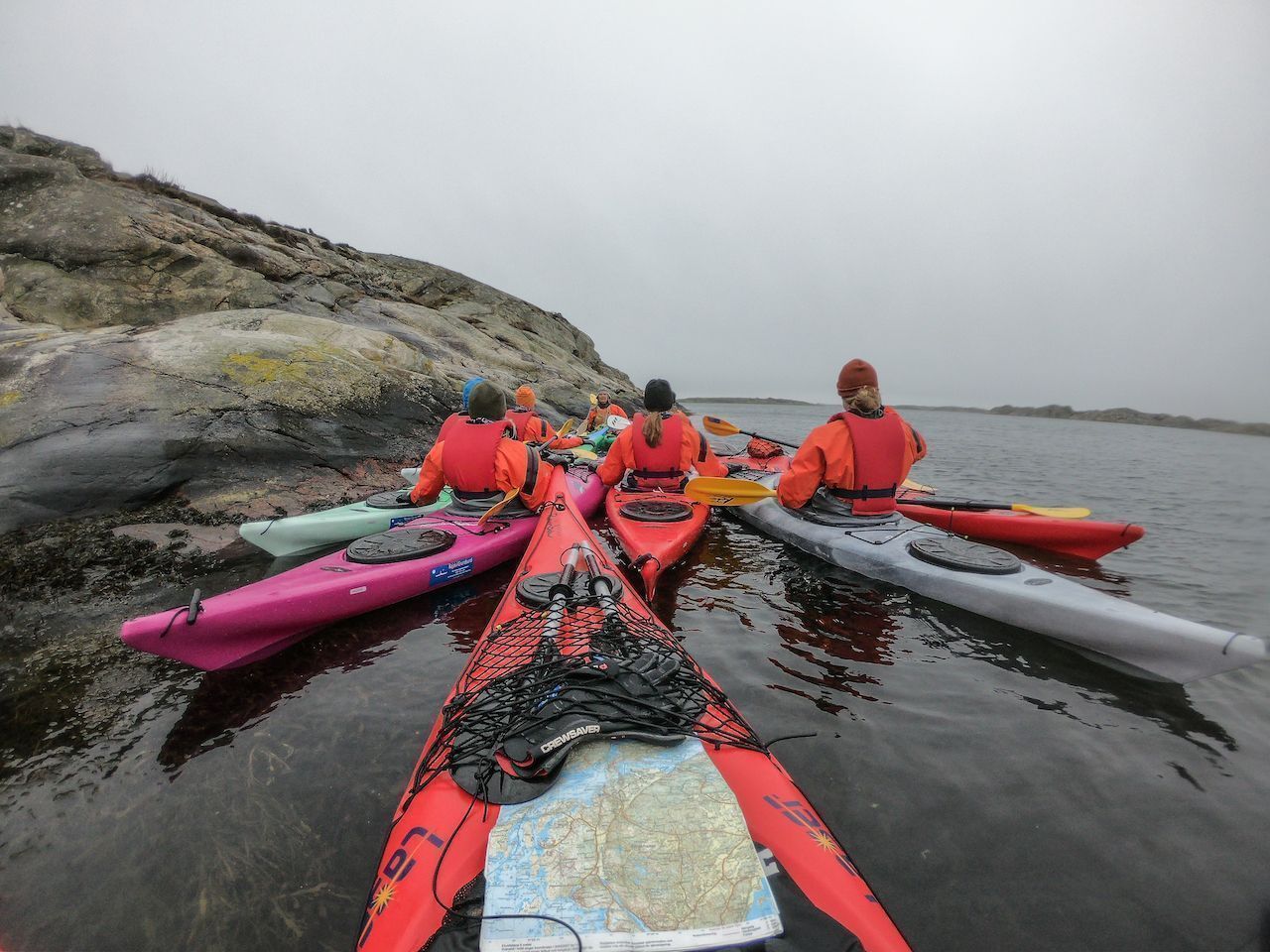With each methodical stroke, your sea kayak glides across the dark water. It’s December on the west coast of Sweden, and movement on the water is limited to a few fishing boats and the occasional ferry spotted off in the distance. You and your guides have the waterway to yourselves.
During the summer months, these waterways bustle with activity as tourists and locals flock to the coast to enjoy the long, sun-filled days. In winter, though, the population of many of these towns declines precipitously, as many of the colorful houses are vacation homes that will sit empty until spring. You’re left with a uniquely desolate landscape, interrupted only by the occasional small coastal village with vibrant houses in red or yellow that have become characteristic of Nordic countries. If it’s snowy solitude on the water you’re after, a wintertime kayak trip off the coast of Gothenburg to its surrounding islands is the perfect place to find it.


